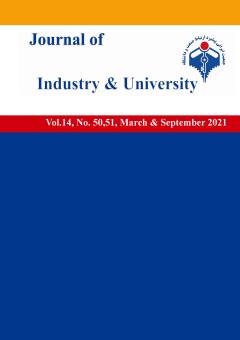-
-
List of Articles
-
Open Access Article
1 - Evaluation of science and technology parks of selected countries with partner selection approach
mohammadreza rostamkhani Parastoo Mohammadi -
Open Access Article
2 - Designing a model for accepting digital currencies in intercompany e-commerce under international sanctions
maziar fekri samad alii morteza mahmoodzadeh hakimeh niky esfahlan -
Open Access Article
3 - "An investigation into the factor that influences entrepreneurship education and enhances entrepreneurial intentions among Iranian students."
Mohammadali Nejadian حسینی hosseini -
Open Access Article
4 - The extent of the effects of Covid-19 on the global patterns of digital transformation
seyed omid azarkasb Seyed Hossein Khasteh -
Open Access Article
5 - The role of science and technology museums in the interaction of universities and society
bakhtiyar mahmodpour -
Open Access Article
6 - Explaining the factors affecting academic work ethics Mohagheg Ardabili University Society
abazar ashtari Taha Ashayeri -
Open Access Article
7 - A semantic sentiment recognition model based on ontology and cellular deep learning automata
Hoshang Salehi Reza Ghaemi maryam khairabadi -
Open Access Article
8 - Evaluation of the influential components in the entrepreneurial qualifications of lecturers of the University of Applied Sciences
ali omran roozban Ali Badizadeh ali akbar ghahramani Sayed Rasool Hossaini -
Open Access Article
9 - Digital developments and perspectives of future higher education in the horizon of 1410
Ahmad keykha Masoud Shafiee Reza Mahdi -
Open Access Article
10 - Explaining the relationship between the socio-economic base and the way of spending leisure time with an emphasis on stress (a case study of young university graduates living in Karaj)
sayyed atollah sinaee mahnaz jalili bahram salimi -
Open Access Article
11 - A case study of Aryamehr University (Sharif) during the Pahlavi period
MohammadHossein Badamchi -
Open Access Article
12 - Identifying and leveling the factors affecting the development of emerging technologies in agriculture with a supply chain approach
Seyed amirali didegah Tahmoores Sohrabi
-
The rights to this website are owned by the Raimag Press Management System.
Copyright © 2017-2026







